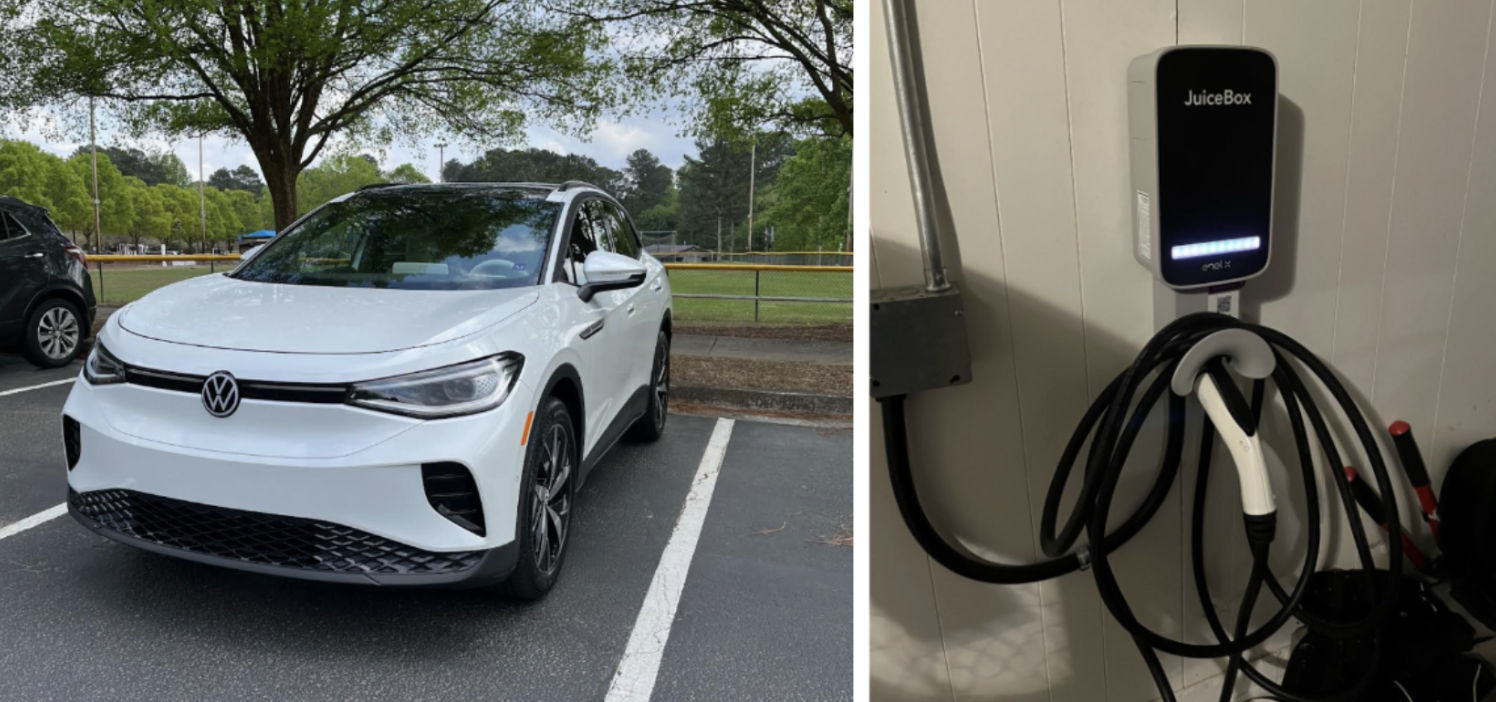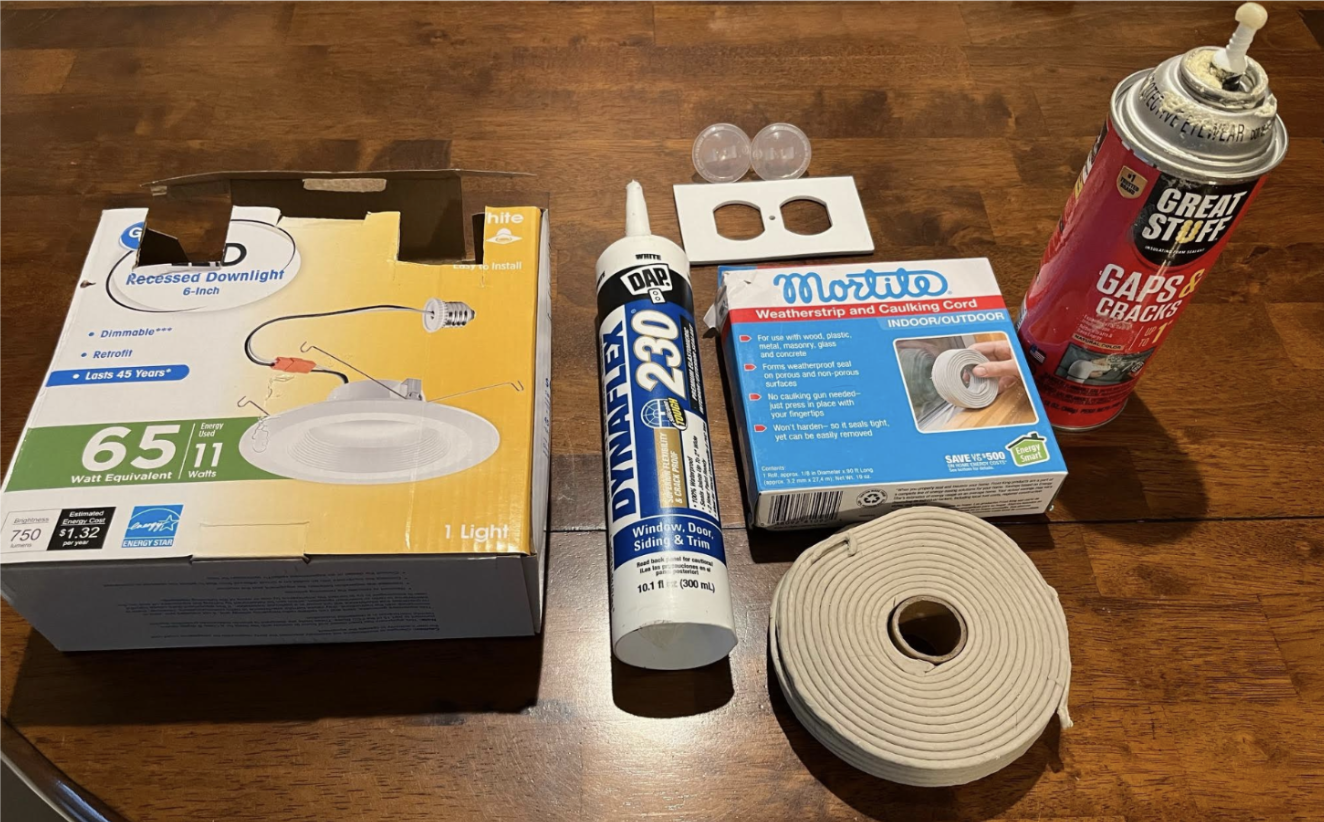As part of the Clean Energy Generation, Larry Heiman used tax incentives and rebates to slash the cost of upgrading his Georgia home to help curb climate-warming pollution. Now, he's spreading the word so others in his community can do the same.
Reed Winckler | February 16, 2024 | Clean Energy Generation, Energy Efficiency, GeorgiaIf the thought of implementing clean energy in your home is daunting, you are not alone. For many of us, even small steps like small-scale energy efficiency upgrades, and especially larger ones like installing rooftop solar panels, seem like unattainable goals, especially when the costs for each upgrade keep racking up.
It is important to remember that not every upgrade has to be done at once, and that there are resources and funding available to help make energy upgrades more affordable. As part of the Clean Energy Generation, you can choose to make home energy upgrades to benefit you and your family’s health, save money on energy bills, and play a part in making your community safer and cleaner, no matter your age, income, zip code, or abilities.
Larry Heiman from Dunwoody, Georgia, is one member of the Clean Energy Generation who is tackling energy inefficiencies and carbon pollution in his home by making home energy upgrades – and he had a little help. Larry has taken advantage of tax credits and rebates from the Inflation Reduction Act (IRA) and his local utility company almost every step of the way as he has made his clean energy transition. This financial support made his choice to take the leap to tackle inefficiencies less daunting. Throughout this process, Larry has learned a lot about clean energy and about how to take advantage of available resources, and now he is spreading the word to his community.
Watch the recording of our Clean Energy Generation webinar on Friday, March 1 at 12:30 PM to hear more from Larry and SACE staff about how each of us can play a role in the Clean Energy Generation by making home energy upgrades, and read on to learn about Larry’s path to using clean energy in his home, the financial incentives his family used along the way, and how he’s sharing what he’s learned to help others.
What was the first way you took advantage of tax credits and rebates from both the IRA and your local utility?
I’ve always been interested in and worried about climate change, but as far as my own personal life, I didn’t take any action until last year. I had learned about and followed the Inflation Reduction Act (IRA) and thought a lot of it could be applied widely, so I figured why not dive in and do something myself. That’s how it started, and I chose to start with my car. The first thing we did was buy an EV last April with the help of a $7,500 rebate.
Shortly after, we installed a level two EV charger, which we did not get any tax credit for from the IRA because we are not in an eligible census tract. Much of Georgia and the Southeast in general does fall into eligible tracts, like lower-income or rural, and can receive a 30% tax credit on EV charger installation costs. In the end, we did get a rebate from Georgia Power, so it’s good to check with your utility for those.

Our EV is our workhorse car – we use it to take our daughter to school and drive to work, and we try to use it any time we drive around town. Very recently, we were able to trade in my old car for a plug-in hybrid EV, but before that, we had the one EV. It doesn’t have to be all or nothing – or all new off the lot. Now, many people can get up to a $4,000 tax credit on certain pre-owned EVs at the dealer.
What energy efficiency measures have you taken around your house, and how did you get started with those?
After buying our EV, we installed solar panels in July 2023, but in retrospect, I would not recommend installing solar first to electrify your home. The energy efficiency work instead should be the baseline – it’s like putting a bandaid over paper cuts all over your house.
We bought our house in Dunwoody, Georgia 10 years ago. It’s 53 years old and your average two-story home, built in an era where people didn’t care or know too much about energy efficiency. To learn how to make the house more energy efficient, I’ve had two energy audits: first through my utility with a rebate, and second through a local HVAC contractor. The second audit was the most useful. I got a detailed report from tests they conducted around my house, such as a blower door test. They pointed out places around my home that could be sealed better, from most important to least important.
For example, we have a basement that has heating and cooling, where it’s not as important for us to air seal between that space and the first floor because the exchange of air is about the same temperature. But in our unconditioned attic, they checked how the insulation is holding up and where air sealing is needed, and they showed me that there are many places where air passes in and out of our attic, like around recessed lighting receptacles, the door to the attic, and holes where wires pass through. So they recommended caulking each air leak on a hole-by-hole basis and adding better insulation, or spray foaming the attic, which is insulation and an air sealing solution all at once.
So this year, we plan to do the attic air sealing and insulation improvements to save on energy bills immediately, and to prepare our home for installing a heat pump in the near future, so that our home can be heated and cooled more efficiently. To offset some of the cost of the air sealing and insulation, we plan to use both tax credits from the IRA (25C tax credit of up to $1,200 per year) as well as rebates from Georgia Power. When we one day replace our existing HVAC system with a heat pump, we can also receive a tax credit on that of up to $2,000.
So far, we’ve done little things ourselves, like door weather stripping and baseboard caulking. If you want to do some work yourself, you can buy the weatherization materials and save the receipts for an IRA tax credit – it adds up, and there are all sorts of home weatherization materials out there to get started.

How have you used tax credits and rebates to install solar panels on your home?
To get started with solar installation, I went to a kickoff event for a local solar installer in May 2023 and had someone come do a consultation, then the panels were installed in July. Thanks to the 25D tax credit in the Inflation Reduction Act, we will receive a 30% tax credit from the IRA on the total cost of the project.
My utility, Georgia Power, does not offer net metering to new rooftop solar owners. Instead, Georgia Power credits us less than half of the retail electricity rate for electricity we export back to the grid – or, the excess of power our solar panels produce but that our house does not consume at that time.
Therefore, it is economically advantageous for us to use the electricity our solar panels generate right when the panels produce it, instead of letting that electricity flow back to the grid. For this reason, we make sure to plug in one of our EVs whenever one of us is home during the day, using the “slow” charger to lengthen the time of the charging session to last the whole day. We also do laundry or other electricity-consuming activities during the day when our panels are producing electricity, rather than at night.
In the future, we may consider installing a battery storage system to complement our solar panels. There is also a 30% federal tax credit for residential battery storage systems provided in the IRA. With a battery storage system, we could store the electricity our solar panels produce, and then use that electricity to power our home during power outages and/or to power our home at night, instead of paying for electricity from the grid.

How are you involved in your community to encourage others around you to take clean energy action?
A goal of mine is to create a group of like-minded citizens to collaborate to promote decarbonization in the community at large, among residents and businesses. The group could hopefully provide education on ways to decarbonize and save money, maybe even offering in-home advice to homeowners and renters. This group would not be limited to Dunwoody, but I felt that it would be best to start by targeting people in my general area. This is what prompted me to get in contact with people who have also signed up with the Clean Energy Generation in my area.
Since last May, I have been on the Dunwoody Sustainability Committee. There are a number of items in the City’s Sustainability Plan, enacted in 2021, that relate to energy efficiency and clean energy that I will be working to get action taken on.
The first action I’ve taken is calculating a greenhouse gas inventory for my local government’s operations, like city buildings and the police vehicle fleet – I teamed up with a professor and his students to work on this in 2023. The results of this greenhouse gas inventory provide a starting point to measure the effects of actions the City takes to reduce greenhouse gas emissions. We just received the outcome of the inventory, and my first action is going to be meeting one-on-one with members of the City Council and the mayor to implore them to demand action from City administration.
Why do you think it is important to implement clean energy in our homes and communities?
For me, the most important reason was first the environmental concern, specifically global warming, but saving money and keeping my family healthy are big benefits for sure. I am trying to encourage others to do what they can to decarbonize, so it would be a bit hypocritical not to first do what I can myself with my own personal infrastructure. Plus, going through this personally will give me a chance to learn about the processes so I can then pass on tips to others, hopefully.
GET INVOLVED IN THE CLEAN ENERGY GENERATION
As members of the Clean Energy Generation, we all have the power to take action and make a difference where we can in reducing our environmental impact. Like Larry, we can explore energy upgrades to make our homes more energy efficient and comfortable, as well as the methods to help make these changes more affordable – and then we can share what we learn with our communities.
You don’t have to be a clean energy expert to make an impact – just ready to learn and excited to make a difference.
Remember to watch our Clean Energy Generation webinar from March 1, where Larry and SACE staff talked about the ways each of us can play a role in the movement through making home energy improvements, plus the funding that is available to help make them more affordable.
#CEGMemberStories